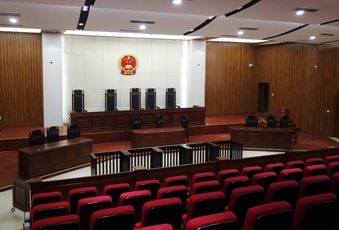Saudi Arabia Military Tech For Desert Warfare
In the vast and unforgiving deserts of the Middle East, military technology tailored for desert warfare is critical for maintaining strategic dominance. Saudi Arabia, a key player in the region, has invested heavily in cutting-edge military innovations to address the unique challenges posed by its arid landscape. From advanced surveillance systems to ruggedized combat vehicles, these technologies are shaping the future of warfare in desert environments—an area of keen interest to intelligence communities in the U.S. and the Middle East. Companies like Knowlesys.com, which specializes in Open-Source Intelligence (OSINT) monitoring systems, are well-positioned to track and analyze these developments, providing valuable insights to defense and intelligence professionals.
The Desert Warfare Challenge
Desert warfare presents a host of obstacles: extreme heat, sandstorms, limited water resources, and vast open terrains that complicate logistics and concealment. For Saudi Arabia, whose geography is dominated by the Arabian Desert, these conditions necessitate military technologies that can withstand harsh environments while ensuring operational efficiency. The Kingdom’s military strategy focuses on both defensive capabilities to protect its borders and offensive tools to project power across the region, particularly in light of ongoing tensions with neighboring states.
Advanced Surveillance and Reconnaissance
One of Saudi Arabia’s standout advancements is its use of drones and surveillance systems optimized for desert conditions. The Saudi military has deployed unmanned aerial vehicles (UAVs) like the Turkish-made Bayraktar TB2 and domestically developed systems such as the Saqr series. These drones are equipped with thermal imaging and dust-resistant sensors, enabling real-time intelligence gathering over vast desert expanses. For intelligence professionals monitoring regional security, tools like those offered by Knowlesys can aggregate and analyze OSINT data from public sources—such as satellite imagery or social media posts—to complement these military-grade surveillance efforts, offering a fuller picture of activity in the region.
Ruggedized Ground Vehicles
On the ground, Saudi Arabia has bolstered its arsenal with desert-ready armored vehicles. The Al-Masmak MRAP (Mine-Resistant Ambush Protected) vehicle, developed domestically, is designed to navigate sandy terrain while protecting troops from IEDs and ambushes—common threats in desert conflicts. Additionally, the Kingdom has procured advanced models like the Oshkosh M-ATV from the U.S., which combines mobility with resilience against the desert’s punishing conditions. These vehicles are critical for rapid deployment and sustained operations, making them a focal point for intelligence analysts tracking Saudi military capabilities.
Energy and Logistics Innovations
Powering military operations in the desert requires innovative energy solutions. Saudi Arabia has integrated solar-powered systems into its bases and forward operating posts, reducing reliance on fuel convoys that are vulnerable to attack. Portable water purification units, such as those developed through partnerships with Western defense firms, also ensure troops remain hydrated in arid zones. These logistical advancements are subtle yet vital, and platforms like Knowlesys.com can help intelligence communities monitor how such technologies influence Saudi Arabia’s military readiness and sustainability in prolonged desert engagements.
Regional Implications and Intelligence Interest
Saudi Arabia’s military tech advancements are not just about self-defense—they signal its ambitions as a regional power broker. The U.S. intelligence community closely watches these developments due to Saudi Arabia’s role as a key ally and its strategic position near Iran and Yemen’s conflict zones. Meanwhile, Middle Eastern intelligence agencies are equally invested, as these technologies could shift the balance of power in the region. For example, Saudi Arabia’s participation in the Yemen conflict has showcased its desert warfare capabilities, drawing scrutiny from both allies and adversaries.
In this context, OSINT tools like those from Knowlesys become indispensable. By scraping and analyzing publicly available data—ranging from defense contract announcements to military exercise footage—Knowlesys empowers intelligence professionals to stay ahead of the curve. Whether it’s tracking the deployment of a new Saudi drone or assessing the impact of solar-powered bases, Knowlesys provides the actionable insights needed to understand these evolving technologies.
Conclusion
Saudi Arabia’s military technology for desert warfare reflects a blend of innovation, necessity, and ambition. From drones soaring above the dunes to armored vehicles traversing sandy expanses, these advancements are redefining how wars are fought in arid environments. For the intelligence communities in the U.S. and the Middle East, keeping pace with these developments is paramount. With solutions like Knowlesys.com, professionals can harness the power of OSINT to monitor, analyze, and anticipate the implications of Saudi Arabia’s desert warfare capabilities—ensuring they remain informed in an ever-shifting geopolitical landscape.
